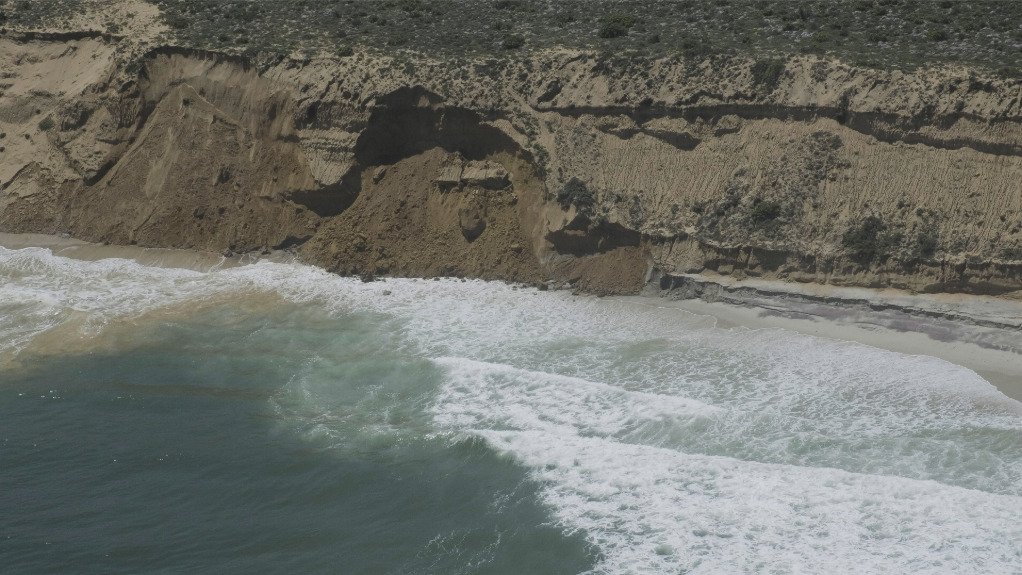Environmental concerns cloud mineral sands mining


TRUE COST The potential risk of irreversible damage because of mining operations must be weighed against commercial interests
With the mineral sands mining industry continuing to grow in South Africa, noncompliance with environmental regulations could become significantly costly for the environment and mining companies.
Addressing these concerns requires a collaborative effort from all stakeholders to ensure sustainable practices and mitigate adverse impacts on ecosystems and communities, according to nonprofit activist legal organisation Centre for Environmental Rights (CER).
Mineral sands operations are active in Critical Biodiversity Areas in South Africa, areas which must be safeguarded in their natural or near-natural state with no further loss of habitat as they are critical for biodiversity and maintaining ecosystem functioning, says CER corporate accountability and transparency attorney Zahra Omar.
Both terrestrial and marine biodiversity are vulnerable to the effects of mineral sands mining, with the Namaqualand regions on the West Coast of South Africa being particularly sensitive.
Omar explains that inland mining activities have the potential to cause irreversible loss of significant vegetation, plant species and faunal habitat, as well as disrupt landscape connectivity.
Coastal mining operations exacerbate these concerns as they disturb the coastal environment and impact on marine ecology. Where mining activities occur close to dunes or beach cliffs, it may also threaten their stability, she elaborates.
Omar highlights that in the long-term mineral sands mining, often taking place in coastal areas, presents various risks including biodiversity loss, impacts on surrounding communities who rely on fishing for their livelihoods, and contributing to climate change.
“Once these environmentally sensitive areas are damaged or destroyed, they could be lost for . . . [current] and future generations,” she points out, adding that climate change also affects economic and social activities.
Protection Through Collaboration
As part of the environmental-impact assessment (EIA) process, mining companies are required to undertake specialist studies to identify, address and mitigate environmental concerns.
Various mitigation measures are included in environmental authorisations such as ensuring buffer zones, rehabilitation of affected vegetation, as well as the search and rescue of species of conservation concern.
However, these measures are effective only if they are adequate and implemented properly. Without rigorous adherence to rehabilitation protocols and climate change considerations, mitigation efforts may fall short of reducing long-term environmental damage, Omar warns.
She stresses that the rehabilitation of affected vegetation needs to be adequate, timeous, as well as context- and site-specific.
Additionally, mining companies must ensure that a specialist study of climate change impacts is conducted.
With the recent wave of applications to undertake prospecting and mining for valuable heavy minerals along the West Coast of South Africa, Omar says it is critical that government and mining companies take into account the cumulative impacts of their operations and adopt an approach that balances economic imperatives with environmental stewardship.
Government Intervention
Government regulation plays a crucial role in monitoring and regulating mining operations; however, challenges remain in ensuring compliance and addressing environmental harm, Omar says.
Noncompliance issues include mining companies’ undertaking activities without the necessary authorisations, inadequate EIAs and failures to comply with licensing conditions.
Noncompliance can result in legal challenges against the mines and their licences, usually initiated through appeals during the authorisation process, says Omar.
Mining operations can also be investigated, including criminal investigations, and any mining activities in contravention of the National Environmental Management Act (Nema) can also result in a fine being issued to contravening parties.
Under the Nema, the relevant authorities are required to take appropriate action to anticipate and prevent negative impacts on the environment and people’s environmental rights.
Meanwhile, civil society has recently had a significant role in ensuring that environmental impacts of mineral sands mining are limited and addressed, Omar points out.
Civil society, mining companies and various stakeholders have also expressed their support for the initiation of a strategic environmental assessment of the West Coast region to limit the environmental impacts of mining; a proposal which they hope the Minister of Forestry, Fisheries and the Environment will take up.
Navigating Regulation
The protection of the environment and the potential risk of irreversible damage because of mining operations must be weighed against commercial interests, Omar asserts.
In this regard, she calls for the establishment, and proper enforcement, of specific no-go areas where mining is prohibited in environmentally sensitive areas.
She points out that Section 24 of the Constitution contains a specific right to “ecologically sustainable development and use of our natural resources” coupled with “justifiable economic and social development”.
“Where extractive industries cause irreversible loss to our ecosystems on which all living things depend, one must question whether the purported socioeconomic development is truly sustainable – and justifiable – in the long term,” Omar highlights.
She also calls for effective oversight by relevant government departments – such as the Department of Mineral Resources and Energy (DMRE) and the Department of Forestry, Fisheries and the Environment – to boost efforts in curbing environmental degradation and ensuring responsible mining.
She says the DMRE must take into account the cumulative impacts of mining within a particular area when granting mining and prospecting rights.
Both departments should ensure that any noncompliance is thoroughly investigated and that strong action is taken against noncompliance, Omar concludes.
Article Enquiry
Email Article
Save Article
Feedback
To advertise email advertising@creamermedia.co.za or click here
Press Office
Announcements
What's On
Subscribe to improve your user experience...
Option 1 (equivalent of R125 a month):
Receive a weekly copy of Creamer Media's Engineering News & Mining Weekly magazine
(print copy for those in South Africa and e-magazine for those outside of South Africa)
Receive daily email newsletters
Access to full search results
Access archive of magazine back copies
Access to Projects in Progress
Access to ONE Research Report of your choice in PDF format
Option 2 (equivalent of R375 a month):
All benefits from Option 1
PLUS
Access to Creamer Media's Research Channel Africa for ALL Research Reports, in PDF format, on various industrial and mining sectors
including Electricity; Water; Energy Transition; Hydrogen; Roads, Rail and Ports; Coal; Gold; Platinum; Battery Metals; etc.
Already a subscriber?
Forgotten your password?
Receive weekly copy of Creamer Media's Engineering News & Mining Weekly magazine (print copy for those in South Africa and e-magazine for those outside of South Africa)
➕
Recieve daily email newsletters
➕
Access to full search results
➕
Access archive of magazine back copies
➕
Access to Projects in Progress
➕
Access to ONE Research Report of your choice in PDF format
RESEARCH CHANNEL AFRICA
R4500 (equivalent of R375 a month)
SUBSCRIBEAll benefits from Option 1
➕
Access to Creamer Media's Research Channel Africa for ALL Research Reports on various industrial and mining sectors, in PDF format, including on:
Electricity
➕
Water
➕
Energy Transition
➕
Hydrogen
➕
Roads, Rail and Ports
➕
Coal
➕
Gold
➕
Platinum
➕
Battery Metals
➕
etc.
Receive all benefits from Option 1 or Option 2 delivered to numerous people at your company
➕
Multiple User names and Passwords for simultaneous log-ins
➕
Intranet integration access to all in your organisation















